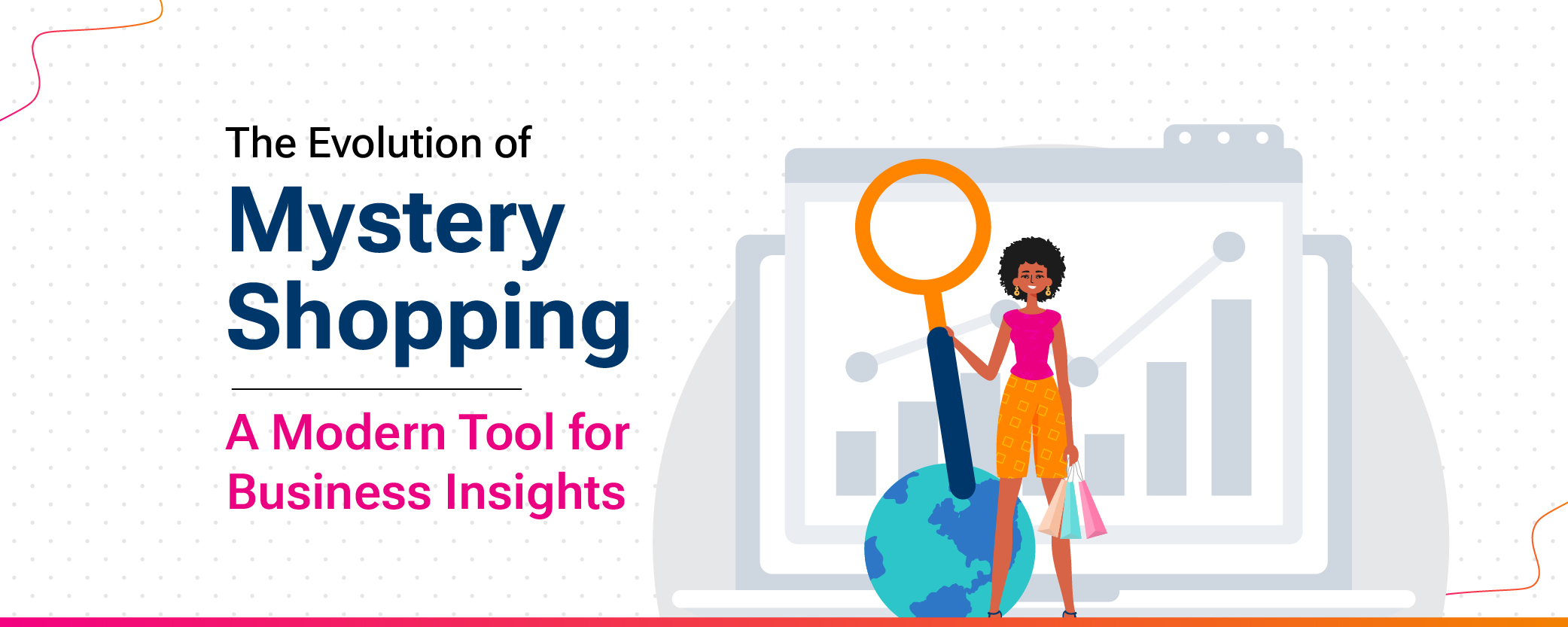Blogs
Services
The Evolution of Mystery Shopping: A Modern Tool for Business Insight
Nov. 14, 2024

Evolution is the ultimate truth which applies to all the living beings on this planet. And since we have also evolved from what we were, we also have a habit of evolving what we have developed so far.
Yes, everything has evolved, whether it's a product or service. One such service that has evolved from being an option to a necessity in running a successful business is mystery shopping.
But what changes have happened in the modern Mystery Shopping scene, and how has it evolved over the years? Let's understand the journey of mystery shopping through this blog and see how businesses can use it as a tool to enhance the customer-facing side of their operations.
Unveiling the History of Mystery Shopping
The introduction of mystery shopping in the business sector dates back to the 1940s. During this time, people wanted to keep an eye on their employees and see whether they were delivering adequate performance or not. So, businesses began to hire people who posed like regular customers and interacted with the employees. It helped business owners to evaluate their employees' honesty and dedication to their work. Initially, this new concept was only limited to banks and retail stores.
As we reached the 1990s, the approach of mystery shopping got attention on an industrial level, and more and more people started taking advantage. Great business minds started to recognize its potential to capture real and unfiltered customer experiences.
Earlier, mystery shoppers would make mental notes during their visit and provide their views and experiences to the business head. In contrast, today, the program has expanded beyond basic evaluation and includes more detailed and data-driven assessments of customer satisfaction. So, what major changes can be seen today in mystery shopping? Let's know more about its evolution.
Advances in Mystery Shopping: Types of Modern Mystery Shopping
The mode of doing business has changed over time. Now, there are different requirements from different industries. So, the idea of conducting mystery shopping has also evolved to meet those needs. It has led to the development of several kinds of mystery shopping that are specific to various aspects of a business.
Classic in-store assessments
Even though it is the oldest method, it is still relevant in today's business landscape, where the focus is more on in-person experiences. In this, the shopper visits the stores physically and analyses the store's layout, cleanliness, customer service, and product displays. It still remains a key tool for businesses as it captures first-hand customer perspectives on various service aspects.
But what has evolved in this method? Today, mystery shoppers and businesses alike can use digital tools to log observations in real-time through apps. Instant reporting helps businesses get immediate feedback, and they can make faster adjustments to improve the customer experience. This classic in-store assessment method is especially used in retail stores, restaurants, and service-based businesses. It is because these physical visits provide a better and more reliable experience.
Digital Audits for E-commerce
Online shopping has become more prevalent today than at any other time. Nearly every business owner is trying to launch their online stores in order to reach out to a wider consumer base. So, with the surge in online shopping, e-commerce mystery shopping has become important. Online shoppers are now exposed to a whole new shopping experience that contributes to digital CX.
This new wave has created a need to ensure that clients have a satisfactory journey from beginning to end while exploring business sites online. Hence, mystery shoppers examine all the key elements like page load speed, ease of finding products, and security of payment options. Through these audits, one can learn more about any technical or user experience glitch that can drive customers away. Hence, with the growth of the digital world, such audits ensure that your online stores are not only functional but also provide an engaging and seamless experience to the users.
Telephonic Audits for Customer Support
Good customer support plays a huge role in keeping your consumers satisfied and happy with your products and services. So, it becomes an aspect of business that cannot be neglected or left unchecked. Hence, it led to the rise of telephonic mystery shopping. In this, the mystery shopper assesses how effectively your company's support team is interacting with the customer over the phone.
Customer Journey Mapping for In-Depth Analysis
Sentimental Analysis: How Mystery Shopping Can Now Unveil Emotions
Conclusion
Let's understand the journey of mystery shopping through this blog and see how businesses can use it as a tool to enhance the customer-facing side of their operations.
